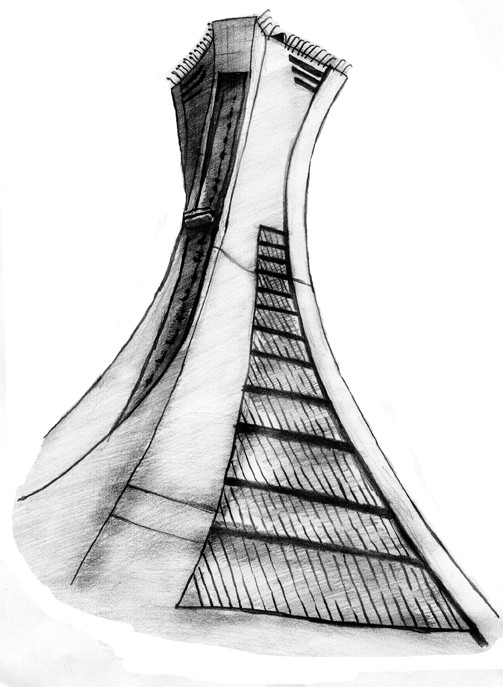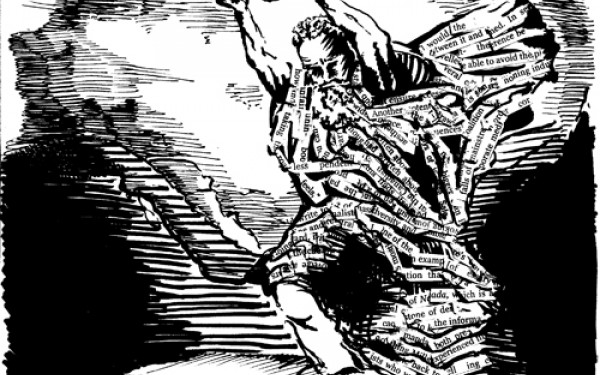Montreal After Mordecai
21st Century Authors Aim to Capture Their City Post-Richler
Take a poll of readers, critics and authors on which writer’s work is most strongly associated with Montreal, and watch as the hands go up to proclaim Mordecai Richler king of the city’s literature.
But after his passing in 2001, a new century of writers has emerged to pick up Mordecai’s mantle.
“The city really has been re-identified and re-imagined by a generation or two of writers following Richler,” said Marianne Ackerman, the cofounder of the Infinitheatre independent theatre company.
“If you think about the Richler Montreal, it’s changed enormously.”
A coproduction between Infinitheatre and online arts magazine Rover, 21st Century Montreal in Fiction condenses some 24 books into one evening of live vocal performance. Each book was published in the past 10 years, and features Montreal not merely as a backdrop but as a subject all of its own.
“We’re not trying to tell you what the plot of every novel is,” said Ackerman, the artistic director of the project. “It’s not a typical reading. It’s kind of a collective research project.”
The performance is divided into sections describing different aspects of the city, from stories about Toronto hipsters doing drugs in the Plateau to seismic events like the Quebec referendum in 1995.
“I tried to include a lot of details that, along with street names and other landmarks, would evoke our city,” said author Elise Moser, whose Because I Have Loved and Hidden It came out last year, and which will be excerpted. “For example, my character Julia goes swimming in the Schubert baths, and we get to experience those things briefly with her. If the reader has been to the Schubert baths, and perhaps gone for Vietnamese food on Duluth St. afterward as Julia does, me setting those scenes in those places will not only resonate with the reader’s memories, but also give the reader certain info about Julia—she’s a Plateau girl.”
Like H.G. Wells’ graphic—and accurate—depictions of the destruction of turn of the century London in The War of the Worlds, fantasy writer Claude Lalumière utilizes descriptions of Montreal’s geography to elicit a very different kind of resonance.
In “This Is the Ice Age”—not to be confused with the Ice Storm of ’98—which is excerpted from his collection of stories Objects of Worship, the city is shrouded in “quantum ice,” and all hell is figuratively let loose; with a fantasy writer, it’s important to qualify that expression.
“The story is constructed as a series of surrealist tableaux with—hopefully—evocative descriptions of how Montreal has been transformed,” said Lalumière. “When, in fiction, places we know in real life are destroyed, altered or otherwise othered, that can have a powerful impact on our imaginations. It’s unsettling. It’s that cognitive dissonance thing, which is at the heart of the most memorable art, in fiction and in other fields as well.”
One way of creating tension between readers and the Montreal they may have known their whole lives is setting the story in the city’s own past.
“In 1907, for instance, only 250 cars existed in all of Montreal. Stop for a second and imagine it,” said author Claire Holden Rothman.
Holden Rothman’s The Heart Specialist is set at the turn of the century, way before Richler’s Montreal, and is one of the few books excerpted not set in the latter half of the 20th century.
“There were horses and buggies and horse-drawn trams, but virtually no cars,” she said. “The first automated taxi worked Montreal’s streets only in 1910. So did the first autobus. And during the time of my novel, no cross illuminated the summit of Mount Royal. That came only in 1924.”
Even contemporary writing inadvertently becomes historical document, said Moser.
“Things change so fast. When [my character] Julia buys a bottle of wine, she carries it in one of those long maroon plastic bags from the SAQ. Those bags don’t even exist anymore, and the book is only a year old,” she said.
“The thing about Montreal,” said Lalumière, “is that of all Canadian cities—and I stress that Montreal is first and foremost a Canadian city—it is the one that has the most historical gravitas and mythic mystery. This, more than anywhere, is where Canada happened, for good and bad. There are strong political and social forces trying to suppress and choke down all of that history, all that diversity, but, as tiresome as all that can get, Montreal refuses to toe the line and completely submit.”
21st Century Montreal in Fiction will take place at Bain St. Michel (5300 St. Dominique St.) on Nov. 28 at 5:00 p.m. Admission is pay-what-you-can.
This article originally appeared in Volume 31, Issue 15, published November 23, 2010.



